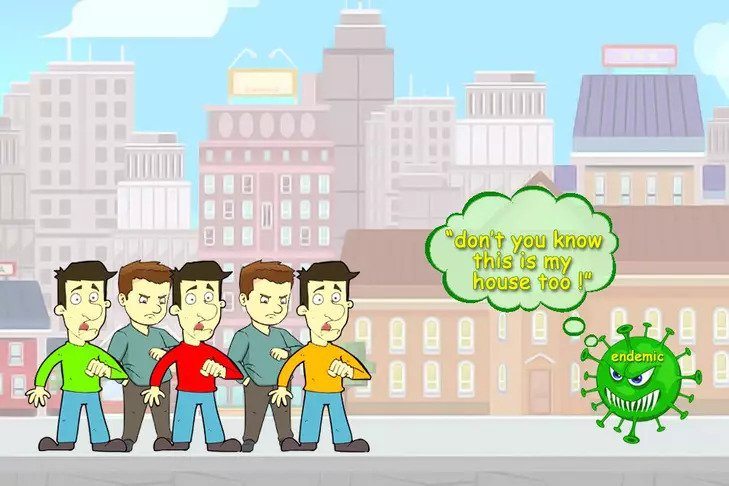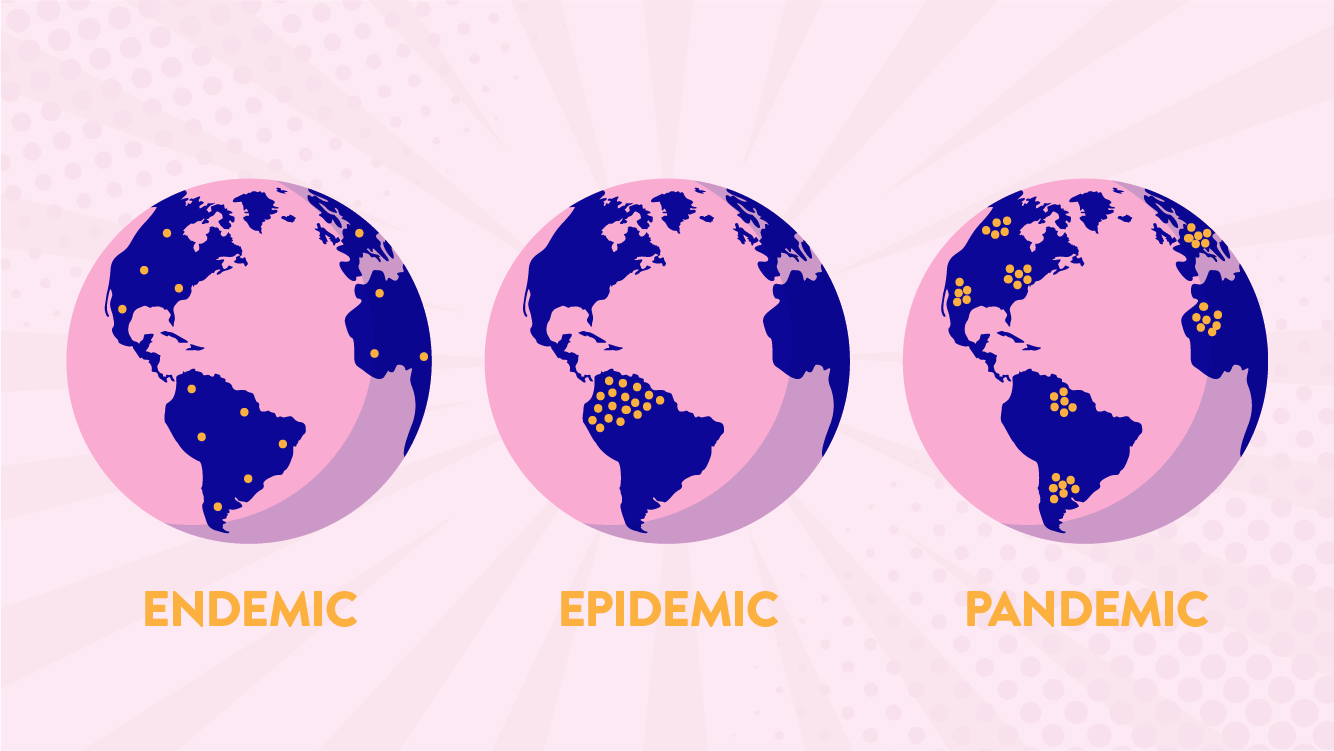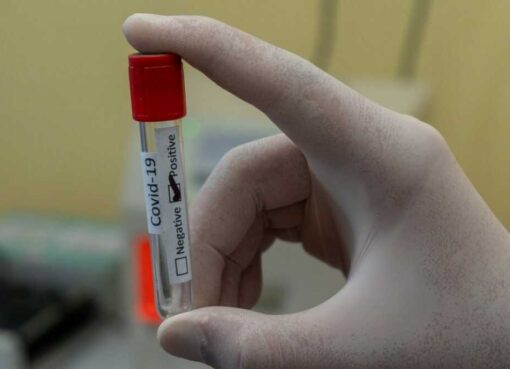Endemic
Endemic is an outbreak of a disease specific to a country or region. In a word, local diseases cause endemic.
There are certain diseases that belong to certain geographical areas. Some diseases are often seen in a particular region. These are examples of endemics.
Examples of endemic diseases
For example, malaria is endemic in large parts of South America and Africa. While chickenpox is considered endemic in the UK, malaria is not. Dengue fever is also an example of endemics.

Epidemic
When a disease spreads rapidly among a large number of people, it is called an epidemic.
Epidemic is a term that is widely used to describe any problem that often gets out of control. It is an outbreak of a disease that infects many people at about the same time and spreads through one or more communities.
The word epidemic is derived from the Greek word “Epidemia”, with epi meaning “upon” and demos meaning “people”.
Think of an epidemic as a forest fire or wildfire that usually starts in a small area and then spreads very quickly through the forest and engulfs all the trees.
Examples of epidemic diseases
Yellow fever, smallpox, measles, and polio are prime examples of epidemics. Zika virus, Ebola virus caused epidemic too.

Pandemic
When an epidemic spreads across the world, it is called a pandemic. A pandemic is basically a global epidemic.
The word pandemic is derived from the Greek word “Pandemos”, where pan means “all” and demos means “people”.
Examples of pandemic diseases
The current coronavirus infection is an example of a pandemic. The worst pandemic in history was the Spanish flu. Bubonic plague, Severe acute respiratory syndrome (SARS), Swine flu are the examples of pandemics.

Epi (among) + demos (people) = epidemic
En (in) + demos = endemic
Pan (all) + demos = pandemic
Is covid a pandemic or epidemic
The World Health Organization declared COVID-19 a pandemic because of the unusually fast rate at which the virus spreads. The new coronavirus has infected and killed millions of people worldwide.
Which is worse?
The WHO defines pandemics, epidemics, and endemic diseases based on a disease’s rate of spread. Thus, the difference between an epidemic and a pandemic isn’t in the severity of the disease, but in the degree to which it has spread. This means that one is not inherently worse than the other.
For example, it is possible for an endemic illness to devastate communities and economies.
It is also possible to have mild pandemics, in which an illness travels rapidly to many regions but does not cause severe illness or death. In contrast, an epidemic could be severe, causing significant illness and death in most of the people whom it affects.
What someone considers to be the worst depends on what they are measuring. In terms of scale, pandemics are the largest and have the biggest potential to cause worldwide disruption. Whether they fulfill this potential depends on the disease and how humans respond to it.
Can an epidemic become a pandemic?
An endemic disease can become an epidemic or pandemic, and vice versa.
An example of this is cholera. This illness occurs when a person swallows water or food containing Vibrio cholerae bacteria. It originated in India, but in the 19th centuryTrusted Source, it caused an outbreak that ultimately spread across the globe.
This cholera pandemic was the first of seven. The seventh, which still affects South Asia, Africa, and the Americas, is ongoing.
However, in many places, cholera has become endemic. This means that it is constantly present at relatively steady levels. Epidemics can also occur, even in locations without endemic cholera.
An endemic disease is not necessarily inevitable, and action may still be necessary to stop it. Cholera, for example, is a treatable and preventable disease. Clean water, sanitation, rehydration treatment, and vaccines can easily prevent many of the deaths that cholera currently causes.
How pandemics spread
Watch the following video to learn how a pandemic spreads.
The way out
A common attribute of epidemics and pandemics is the need to take preventive care from infection. Typically, there is a large time lag between an outbreak and when vaccinations can be distributed, as we have seen with COVID-19. In the meantime, it’s crucial to take the following steps to stay healthy:
- Wash your hands often with soap and water. Make use of hand sanitizer.
- Don’t touch your mouth or nose without sanitizing or washing your hands.
- When you cough or sneeze, cover your mouth and nose with a tissue.
- Avoid crowded places. Stay home if you can.
- Disinfect household surfaces regularly.
- Maintain social distancing when you go out of the house.
- Wear a mask when outside of your household.




